- Home
- Encyclopedia
- Photographer On The Pitchfork: Charles Belden’s...
Photographer on the Pitchfork: Charles Belden’s Version of the West
“If a picture doesn’t tell a story,” photographer Charles Belden told his granddaughter, “it’s not worth taking.” His three decades of images told the story of Wyoming ranching in national magazines from about 1914 to 1940, making both him and Wyoming’s massive Pitchfork Ranch famous. But there is much more to Belden’s story than meets the eye.
At first glance, Belden’s photographs show the romantic, rough-riding, tough-spirited West. His pictures of cowboys and sheepherders on the Pitchfork doing chores, gathering cattle, branding calves and sorting sheep are easily recognizable and became something of a trademark for the photographer. But on a deeper level, the images also reveal the impressive artistry and complexity of the man who created them.
Belden’s granddaughter, Lili Turnell, in a 2018 television documentary for Wyoming PBS, said that he “really had a vision for photography that was very unique for the time.” Her late husband, Jack Turnell, also featured in the program, elaborated, explaining that Belden “saw things others couldn’t see.”
Most of Belden’s commercial photographs show ranching’s daily routines, achieving his twin goals of preserving the historical record and selling his work. The reality of the work—herding 800 cattle across a river on a “pretty rickety” bridge, for example—often contrasts sharply with the stereotypical and more glamorous image of the West—cowboys round a campfire perhaps or famous dudes on horseback. The bridge collapsed and his camera was ruined, but Belden survived the crossing. But he also created photographs that show the romance of the West, the vision the public wanted to see.
Scholar Vanita Van Fleet Fowden calls him “a true historian/photographer in the tradition of William H. Jackson and Joseph E. Stimson in Wyoming.” Jackson is well-known for his work with the Hayden expedition in the latter 1800s, and Stimson for his detailed photographs of the early 1900s, which included scenic views and towns as well as farm and ranch life.
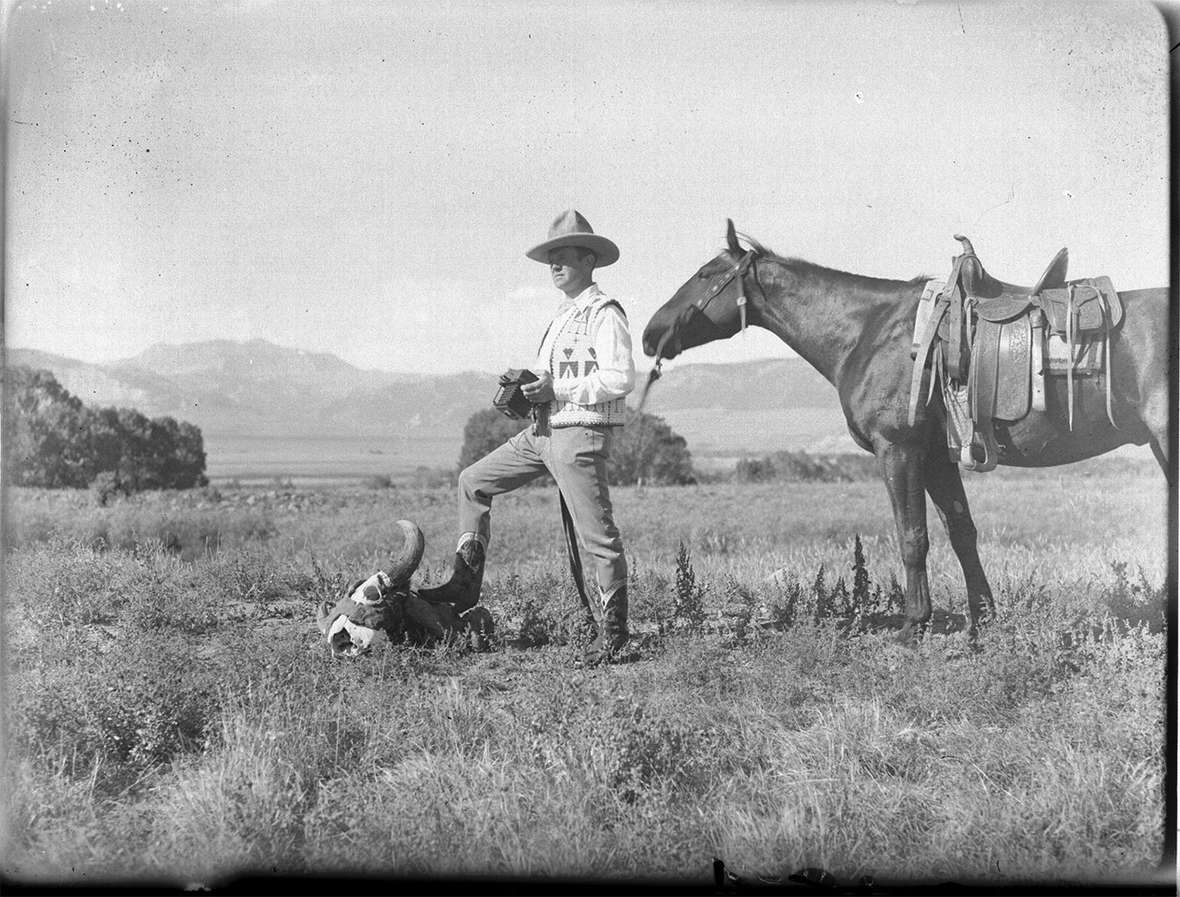
Pioneer spirit
In 1879, a German royal named Otto Franc von Lichtenstein founded the Pitchfork Ranch along the Greybull River in Wyoming Territory’s Bighorn Basin. Eight years later, on Nov. 26, 1887, Charles Belden, who would come to that ranch as an adult, was born in San Francisco.
He was the grandson of Josiah Belden, who traveled west with the 1841 Bidwell-Bartelson party, first wagon train of settlers to use what would become the Oregon Trail. Charles later recalled taking pack trips in the Kings and Kern river areas after he turned 10 years old. An uncle showed him how to take photographs in those days of glass plates. “We invariably had two and three pack mules loaded down with cameras, plates and equipment and I doubt if more pains have even been taken to photograph that region,” he wrote in a 1927 letter to his friend Mary Jester Allen.
Belden finished high school in Ross, Calif., and then attended the Massachusetts Institute of Technology where he studied mechanical engineering. In the summer of 1909, he and a couple of college friends traveled throughout Europe and Russia, logging more than 3,000 miles in “the empire of the Czar,” he wrote in the letter years later. Their 1908 Packard touring car, supposedly the first car driven for pleasure through Russia, caused a sensation and they “were feted and honored in all of the larger cities ... .”
For the trip, Charles purchased a Zeiss Minimum Palmos camera which used 4 x 5 inch glass plates, but, for its time, was considered a portable camera. It could withstand rough conditions and, with its fast shutter speed, take action shots. The camera cost approximately $25. He recorded sights in England, Germany, Switzerland, Italy and Russia, just eight years before the end of the reign of the czars.
One of the friends on the tour was Eugene Phelps, whose father, Montana land magnate L.G. Phelps, had purchased Wyoming’s Pitchfork Ranch in 1903 following the death of Otto Franc.
On their return to the United States, Belden worked in an engine factory, serving as an apprentice in the machine shop for two years. On a visit to the Pitchfork, he loved the ranch and became smitten as well with Eugene’s sister, Frances. They married on Feb. 1, 1913 and came to live on the Pitchfork Ranch in 1914. The next year, the ranch business was expanded to include dudes, with Frances and Charles managing the operation. By 1922, the couple had three children, Margot, Annice and Mary Elizabeth, who died as a youngster.
Eugene’s father died in 1922. The ranch became the property of Eugene Phelps and Charles Belden. Frances Phelps Belden recalled that the two battled constantly. Eugene was more interested in engineering and inventing things than in financial matters, and Charles enjoyed his photography much more than tending to the business.
Frances explained in the reminiscences she shared with Jack Turnell for his 1978 history of the Pitchfork Ranch that her family “resented” Charles’ publications in magazines like National Geographic and his subsequent promotional lecture tours, even though she championed these activities as good advertisements for the Pitchfork. She wrote, “Coupled with inheritance taxes, which took almost all our holdings outside the ranch, poor management and the rapidly coming depression of the ’30s, the Pitchfork was under great monetary strain.”
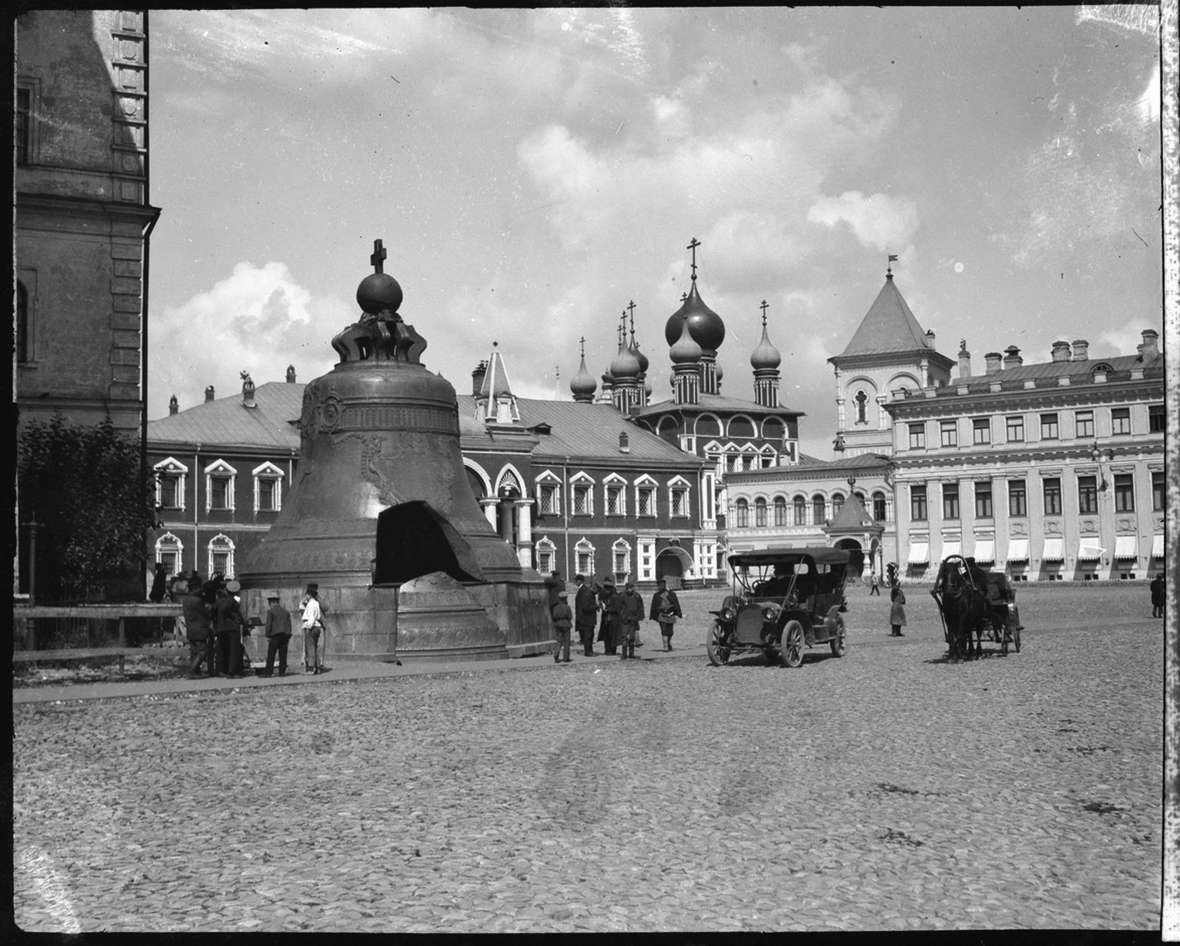
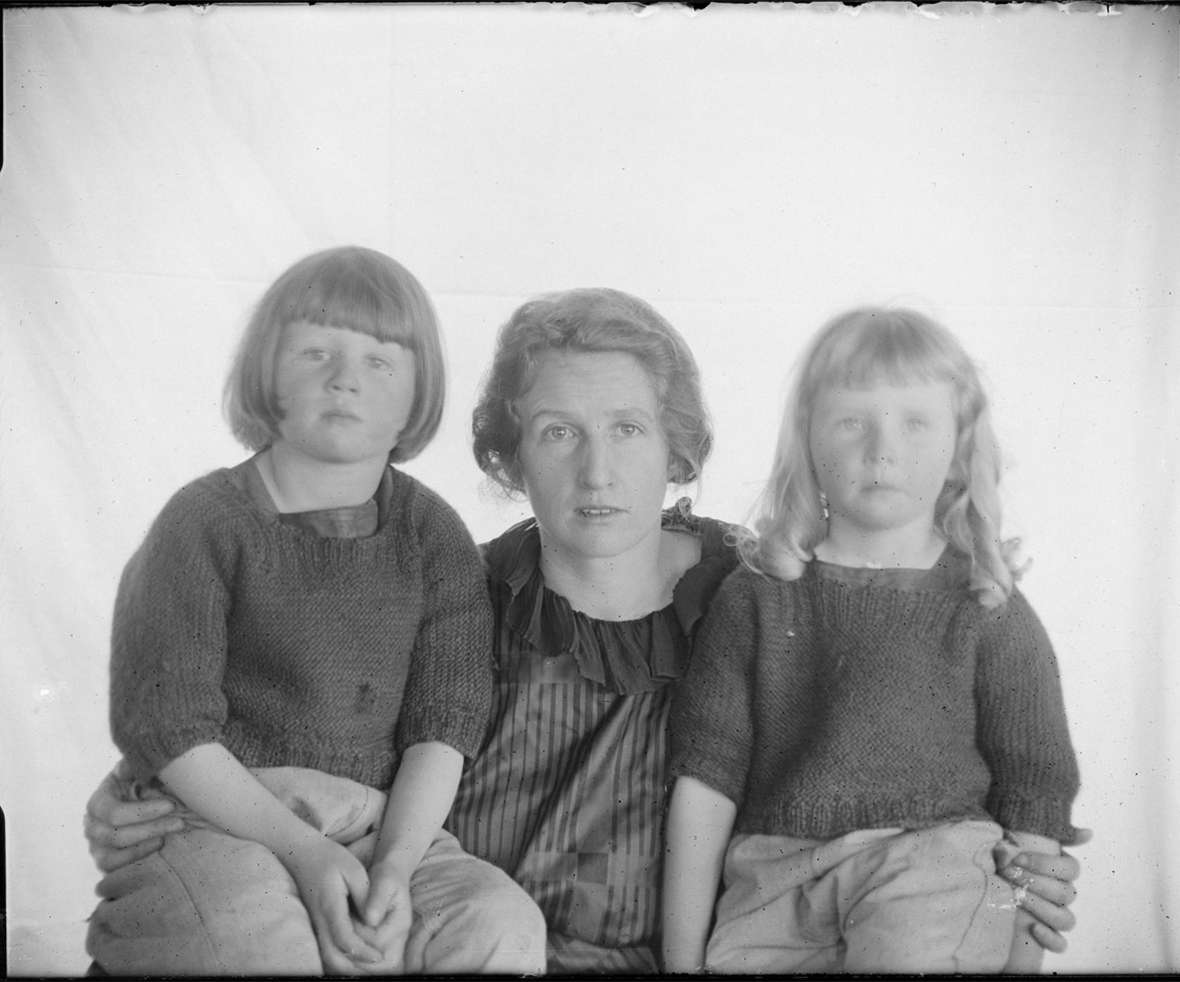
Photographic methods
Belden explained in his 1927 letter to Mary Jester Allen that, “… I set about to secure as complete a story as possible pictorially and photographically of the different phases and incidents of handling cattle on the range.”
One of his favorite vantage points was “atop a horse,” according to Lili Turnell, and he taught the horse to stand still long enough for the shutter to click. He also carried a unipod in his rifle scabbard to provide greater stability when slower shutter speed was needed. Belden’s yearning to capture “everyday life on the cattle ranges,” as he wrote to Allen, was accomplished in part because of his tenacity. He kept his camera within easy reach for about fifteen years through all kinds of weather, always watching for photographs to show themselves to him.
He later recalled carrying his camera “approximately 60,000 miles by horseback, 150,000 miles by plane and half a million miles by auto.” The numbers are significant, but so too are the modes of transportation, as they reflect the changing times in the West in the decades Belden recorded.
Some distinct advantages helped him. In addition to a keen eye and technical and artistic ability, Belden, as a ranch owner, could photograph cowboys and sheepherders who looked the part and had the skills he wanted to show. The Pitchfork itself provided the spectacular, rugged backdrop.
He largely taught himself how to develop and print photographs and created a solar enlarger to print negatives. In early days, he used field glasses in front of his camera to make a telephoto lens. He often set up his photographs and used techniques like framing, centering cowboys on horseback between the posts of a corral gate for example; and compositing, in which he layered one photograph onto another to make the scene he preferred, as in a picture with a bellowing bull in the foreground and forested hills in the background.
He also trained a pet coyote to howl on command for photographs and sometimes used a stuffed animal so he could arrange the shot. He used a new color photography process known as autochrome to achieve special effects with light and color, displaying prints in 1916 at the San Francisco Panama-Pacific Exposition. Design and the expert use of light, especially after flashbulbs were invented in the 1930s, also make Belden’s work remarkable.
He studied magazines and newspapers to determine which would best appreciate his pictures and articles and would be likely to accept them for publication. His work appeared in periodicals ranging from livestock magazines like The Cattleman, The American Hereford Journal, National Wool Grower, and Breeder’s Gazette to newspapers like the Denver Post, the Kansas City Journal-Post and the Chicago Daily News, to general-interest, mass-market magazines like National Geographic, Life, Colliers, Scribner’s and the Saturday Evening Post.
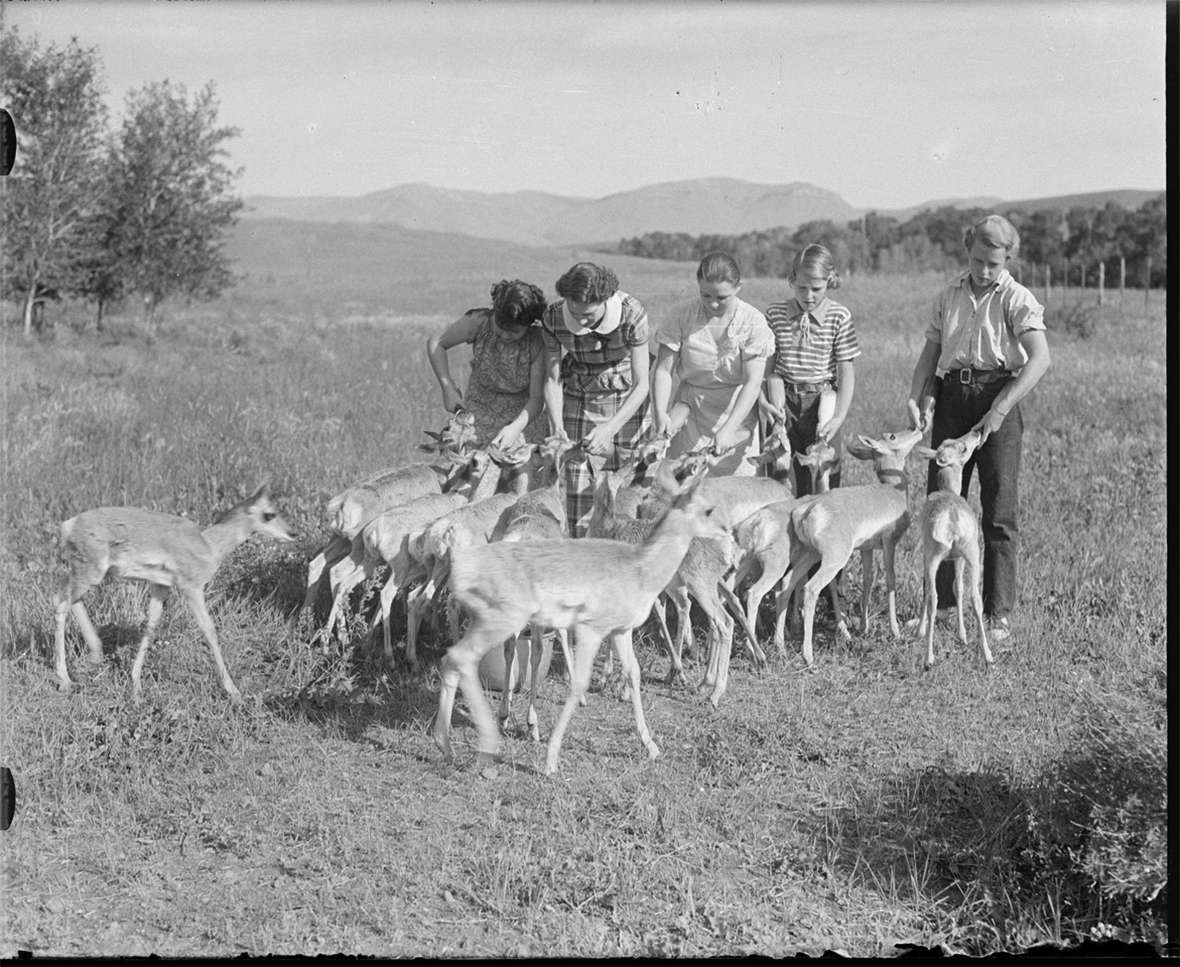
Antelope Charlie
Belden’s ranch experience, promotional prowess and photographic skills all came into play when he became concerned about the pronghorn antelope on the Pitchfork. His worries were two-fold: a high predation rate meant decreasing herd numbers for the wild game animals, but antelope competed for the grass that fed the ranch’s cash crops—cattle and sheep.
To solve both problems, he created a rescue project to capture baby antelope within 24 hours of their births, having his wife and daughters bottle-feed them with cow’s milk until the fawns were old enough to be released. Lili Turnell explains, “They were released back into the wild when old enough to survive on their own or sold to zoos or private collectors across the U.S.”
But money was part of this picture too. According to a contemporary newspaper report, the New York Herald-Tribune quoted Belden as saying, “We’re into the cattle and sheep business out at the Pitchfork, and the antelope got to eatin’ more than their share of the grass, so we got a permit from the state to sell ’em.”
Lili recalls that the buyer paid for the transportation, and Belden charged $100 per antelope. About 200 antelope were sold.
He preferred to deliver the antelope by airplane, relying on his Cody pilot friend Bill Monday to fly them in his Ryan Monoplane to cities like Detroit, Chicago and New York.
Two of the antelope sold in 1936 were transported to Nazi Germany aboard the massive airship Hindenburg, and Belden seized the promotional opportunity. He made a photograph of the Hindenburg centered between two silhouetted men, each of whom holds an antelope. Fowden’s research reveals, though, that Belden used cardboard cutouts of the men to create the silhouettes, which he “photographically burned into the print at the enlarger.” The silhouettes make a frame for the famed zeppelin, a technique Belden often used; and his artistic license, distorting the facts, made for a compelling advertisement of the antelope transport project.
He called himself Antelope Charlie Belden and created a special logo. Fowden states that Belden “was filled with adventure and was challenged by the untried.” He liked being first at things and was “by-far his own best press agent.”
Lili Turnell said her grandfather considered the project a success because the antelope numbers increased, “and it allowed him to redistribute the antelope to new homes, while making a little money.” There were about 20 antelope on the ranch when they began; the numbers there eventually grew to 2,000.
At the turn of the last century, pronghorn populations were already falling precipitously. In 1905, the Legislature declared all wildlife property of the state. In 1906, pressure from poaching, harsh winters, coyotes and other predators led officials to estimate that only 2,000 pronghorn remained—the lowest Wyoming estimate ever.
As a result, antelope hunting was closed in Wyoming for most of the next 25 years. By the 1920s, it was clear that competition for forage from cattle and sheep also was limiting recovery of the herds. In 1927, hunting was again allowed. In 1929, hunters took 6,533 pronghorn, leaving a herd state game officials estimated at 26,625. A New York Times article in late October of that year called the harvest a slaughter, and compared it to the destruction of the buffalo. The season was closed again for three years in the early 1930s. By the middle of the decade antelope hunting was again allowed.
Organizations of sports hunters worked with the U.S. Forest Service in those years to evaluate livestock grazing in several areas—“the beginning of public involvement in the use of public lands,” according to pronghorn management specialists Bart O’Gara and Jim Yoakum. In the mid-1930s, the state started paying landowners a small fee for each license for pronghorn harvested from their properties, a practice that continues today to help defray the cost of the antelope grazing on private land. Herd numbers in 2013 totaled more than 360,000.
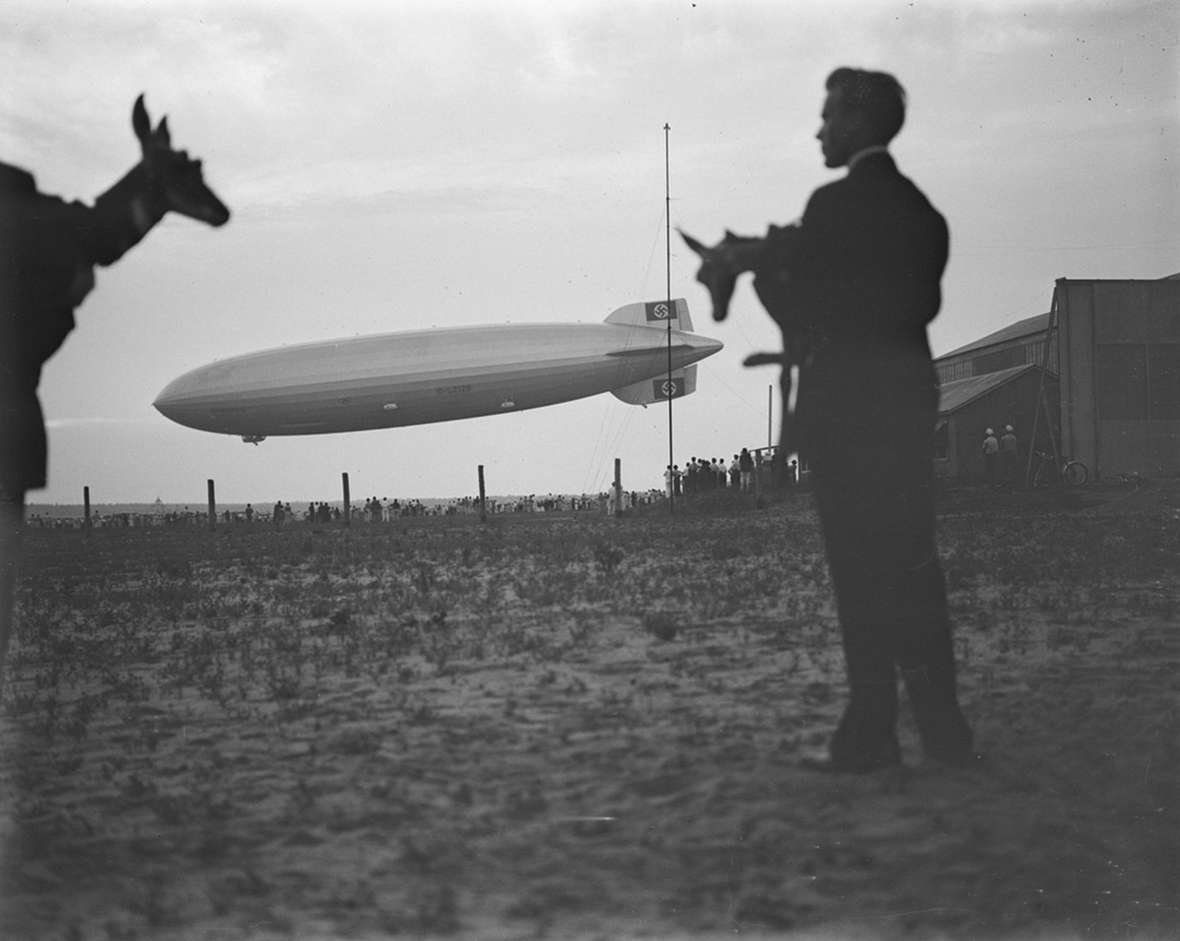
Western culture of interest worldwide
Belden’s photography and promotional skills also attracted celebrities: Humorist Will Rogers, aviator Amelia Earhart and movie stars Tim McCoy and Wallace Beery all came to the Pitchfork. Pilot Monday flew in the guests. Historian Rick Ewig explains, “National advertising of the wild west image, especially of a visual nature, helped Wyoming draw the tourist dollar during the 1920s and 1930s. One of the main practitioners of this was Charles Belden … .”
Following World War II, the Cowboy Club of Munich and the Westerners Corral in Paris formed, offering Europeans respite from the war years through participation in western cowboy culture. Belden photographed them as they rode horseback and twirled lassos, clad in traditional cowboy outfits, further expanding the reach of the lifestyle he knew and promoted.
Belden worked on assignment for magazines like National Geographic, Colliers and Life. Lili Turnell says that her grandfather was “not egotistical,” but “he did like that limelight and just promoting the western life.”
During his heyday, Belden toured the country, lecturing about the West and sharing stories of life on the ranch. He often wore cowboy attire, including a hat the Stetson company named the “The Belden.” He advertised Camel cigarettes. His photographs were used for Solitaire coffee ads, for restaurant menus and other commercial ventures. Belden became so famous, according to Lili, that the post office delivered a letter to him addressed only with a drawing of a man behind a camera wearing a cowboy hat next to a pitchfork and the word Wyoming. This delivery was noted on “Ripley’s Believe It or Not!”
In 1938, Charles Belden’s father died. His inheritance, according to the Wyoming PBS documentary, included buildings in New York City. He became known as the “Cowboy Millionaire.” But by 1939, Jack Turnell explained, “possible bank foreclosure loomed” for the Pitchfork Ranch. The stress and conflicts that broke the ranch were almost certainly a factor in breaking the Beldens’ marriage as well. Frances and Charles divorced in 1940.
In 1940, Belden volunteered to take aerial photographs for a game census for the Wyoming Game and Fish Commission, the United States Forest Service and the Cody Club. As pilot Bill Monday flew the plane over the rugged terrain of the Shoshone National Forest of northwestern Wyoming, Belden used an Eyemo camera to snap shots at 32 frames per second, documenting the large elk, deer and mountain sheep herds. The men, along with two others who rode along to help count, also counted animals that had drifted away from the herds. This work provided greater accuracy of herd counts.
Belden updated his photographic equipment as new technologies appeared. Fowden notes that when Belden replaced his first Zeiss camera with a newer model, he gave his original camera to the Zeiss Ikon museum in Stuttgart, Germany, where it is housed today.
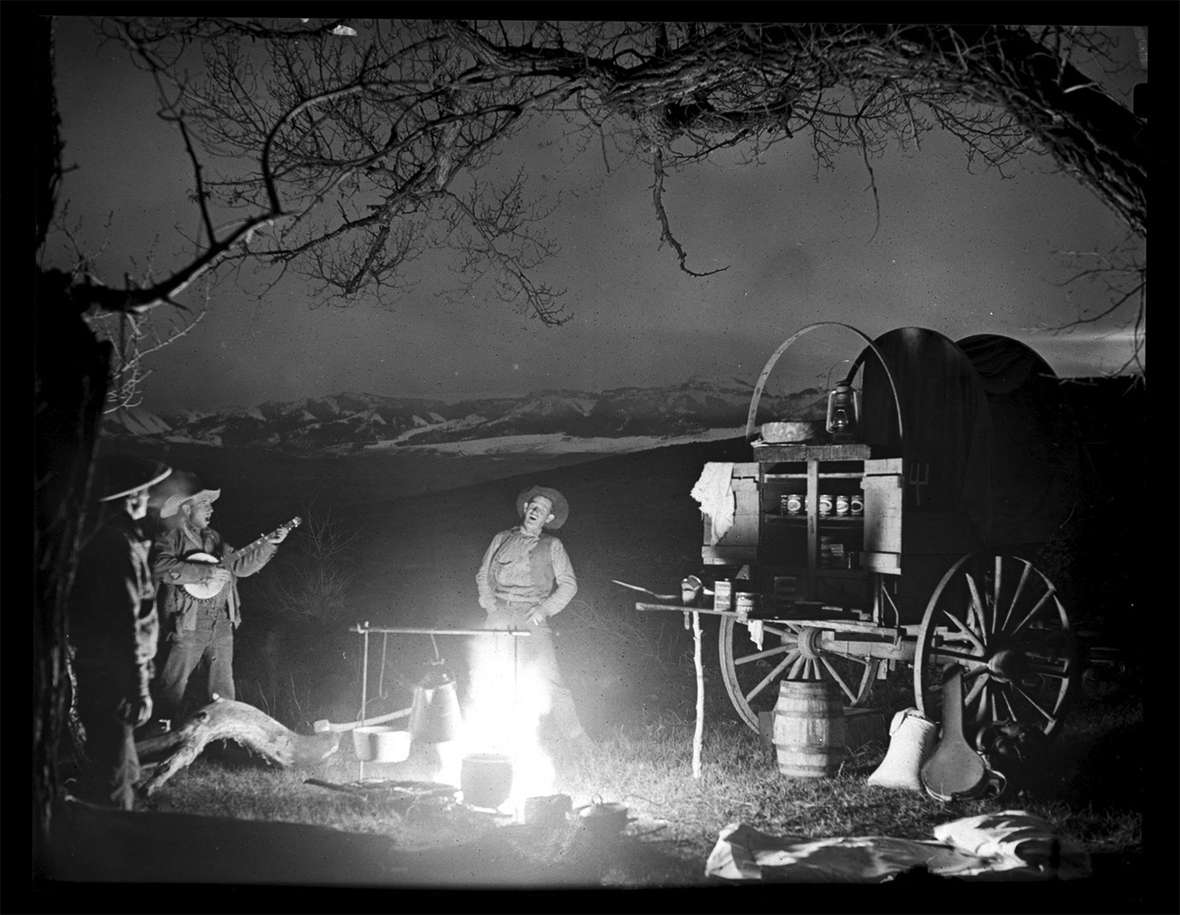
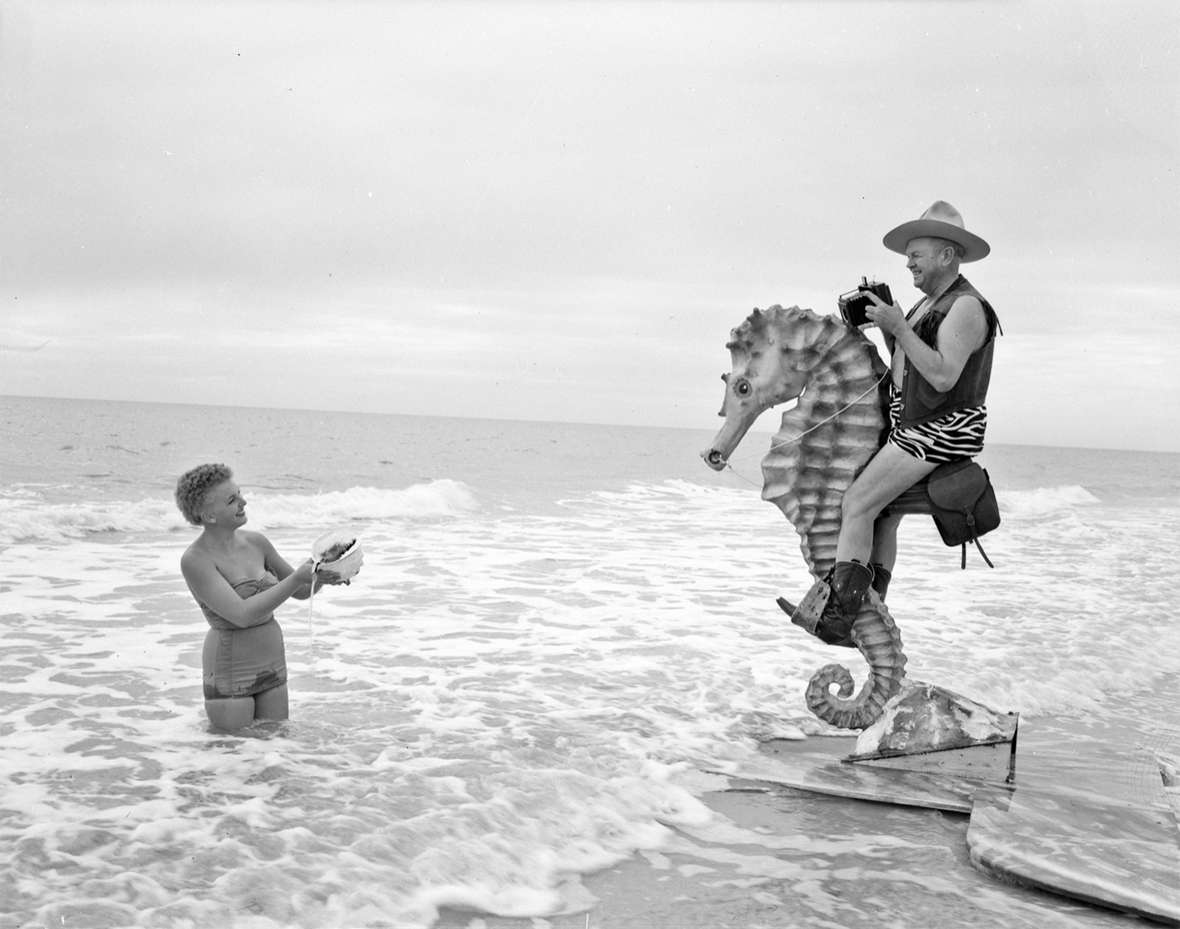
Seahorse Charlie
In his fifties, Belden married Verna Stouffer, who had first been married to Wyoming oilman Jack Steele. They moved to Reddington Beach, Fla., near St. Petersburg. Belden continued to take photographs, often of sailboats, beaches and women wearing swimsuits. Belden now promoted himself as Seahorse Charlie Belden, but these images lacked the intensity of his western photographs.
In his seventies, he could no longer take pictures nor write well because he had Parkinson’s disease. Lili recalled that her aunt went to visit Charles and Verna in Florida. Just a couple of hours afterward, Verna found Charles in his darkroom. He had apparently attempted suicide by trying to shoot himself, but lingered for a few days. He died on Feb. 1, 1966. Lili says she believes that “he decided … I’m just not going to do this anymore.”
Sale of the Pitchfork
The Pitchfork Ranch of Charles Belden’s time was made of a number of units including the 91 Ranch, the Whit Ranch, the Bar TL Ranch, the Meeteetse Creek Ranch, the Z-T Ranch, Pickett Ranch and Wilson Ranch. The Pitchfork, which ceased being a dude ranch in the 1940s, was divided in 1945, with the Belden family retaining the Pitchfork and the Z-T, the Pickett and Wilson ranches. The Phelps family kept the Whit Ranch and the Meeteetse Creek Ranch, and the Bar TL and 91 ranches. The Phelps units were further divided in the 1950s, separating the Bar TL and the 91. In 1978, the Bar TL Ranch was auctioned. Jack Turnell, who had worked on the Pitchfork beginning in 1971 at the request of Frances Phelps Belden, “was instrumental in buying” the ranch, which then returned the Pitchfork to its original 1945 holdings before the Phelps-Belden split, with the exclusion of the 91 Ranch.
Echoing Charles Belden’s promotional activities of earlier years, two Marlboro cigarette advertisements were filmed at the Pitchfork in the mid-1980s.
The Wall Street Journal advertised the Pitchfork Ranch for sale in 1998, noting that the Greybull River and 13 creeks ran through the 110,000-acre property, which included private land, forest and state leases. At the time, hay and oats were raised, and the cattle operation consisted of 1,000 pairs of cows and calves. The asking price was $25.5 million.
Current owners Greg Luce and Drs. Lenox and Fran Baker purchased the ranch in 1999 for an undisclosed price. The Turnells leased the ranch from its new owners for 10 years, while retaining about about 10,000 acres of the property themselves. In more recent years, other managers have run the ranch. Luce and the Bakers divided the ownership in 2016, with the Bakers owning the great majority of the land and the Luces keeping the old Pitchfork buildings and several thousand acres. Jack Turnell died in 2017; Lili continues to be active in ranching activities, including riding horseback and tending financial matters.
For Lili, her grandfather’s collection is a cherished and priceless legacy. But there’s more to the story. The extensive collection of photographs that Belden created—numbering perhaps in the tens of thousands—stands as the pictorial depiction of the “different phases and incidents of handling cattle on the range” that he aimed for, while also preserving a vibrant image of the West that people throughout the world wanted to see and still enjoy today.
Resources
Sources
- “Antelope Numbers across Six States,” GoHunt.com. Accessed Dec. 27, 2018, at https://www.gohunt.com/read/antelope-numbers-across-6-states#gs.yNIXo7M.
- Belden, Charles. Wikipedia. Accessed Nov. 28, 2018, at https://en.wikipedia.org/wiki/Charles_Belden.
- Belden, Charles to Mary Jester Allen, Buffalo Bill’s niece. Thermopolis, Wyo., Spring 1927. (Ms. Allen was curator of the Buffalo Bill Museum in Cody, Wyo.) Charles Belden Collection, MS 003, Box 1, Folder 3a, McCracken Research Library, Buffalo Bill Center of the West, http://centerofthewest.libraryhost.com/?p=collections/findingaid&id=4&q=&rootcontentid=235#id235. Includes comments on the King and Kerns rivers area, “two and three pack mules loaded down with cameras, plates and equipment …” the river crossing recalled; and “… I set about to secure as complete a story …”
- “Charles Belden: Cowboy Photographer,” Main Street, Wyoming. Wyoming PBS. Tom Manning, writer/producer. May 27, 2018. Accessed Nov. 27, 2018, at https://www.pbs.org/video/main-street-wyoming-charles-beldon-cowboy-photographer/. Lili and the late Jack Turnell recall Lili’s grandfather and his life and legacy in this engaging documentary, which also features numerous Belden photographs and includes details about the antelope project and the Pitchfork Ranch.
- “Big Horn Basin Photos: Pitchfork Ranch, C.J. Belden and the Development of His Photography,” Wyoming Tales and Trails. Accessed Dec. 4, 2018, at http://www.wyomingtalesandtrails.com/beldenearly.html. This site contains numerous Belden photographs, some of them in color, and also includes details about the antelope project, including that the baby antelope were bottle-fed with cow’s milk.
- Clayton, John. “Romancing the West: Dude Ranching in Wyoming.” WyoHistory.org. Accessed Dec. 19, 2018, at /encyclopedia/romancing-west-dude-ranching-wyoming
- Ewig, Rick “Give Them What They Want: The Selling of Wyoming’s Image Between the World Wars.” In Readings in Wyoming’s History, Phil Roberts, ed. Laramie, Wyo.: Skyline West Press/Wyoming Almanac, 2000, 56. The cover photograph for this book is a ranch cabin scene by Charles Belden.
- Fowden, Vanita Van Fleet. “The West of Charles Josiah Belden,” master’s thesis, University of Wyoming, December 1984. A detailed and informative examination of Charles Belden and his artistry. Josiah Belden with Bidwell-Bartleson party, 1841, Appendix A; Zeiss camera and cost, p. 12; photograph development and solar enlarger, 13; unipod, 14; field glasses used to make telephoto lens, p. 17; autochrome and San Francisco exposition, 20; Document ranch life and sell commercial photographs, p. 21; Mileages of camera travel, p. 21; keen eye for appealing photographs, choosing cowboys for photographs, p. 22; insignificance of fees, p. 24; adventure, being first, and “his own best press agent,” a quote from Cody photographer Jack Richards p. 25; 1940 aerial game census and Eyemo camera, 28; “true historian/photographer,” comparison with Jackson and Stimson, p. 31; publications and periodicals, 113-123; Hindenburg and antelope transport photograph, p. 60.
- Hassrick, Buzzy. “Charles Belden,” Legends, Cody Enterprise, Summer 2014, 58-61. Accessed Dec. 4, 2018, at https://issuu.com/codyenterprise/docs/legends_2014. This article includes the 1930s era Belden quote about the antelope project from the New York Herald-Tribune.
- “Jack Tracy Turnell.” Obituary. Thermopolis Independent Record. March 30, 2017. Turnell died March 19, 2017. Accessed Dec. 4, 2018 at https://www.thermopir.com/story/2017/03/30/obituaries/jack-turnell/3760.html
- Josiah Belden, 1841 California Overland Pioneer: His Memoir and Early Letters. Doyce B. Nunis, Jr., ed. Georgetown, Calif.: The Talisman Press, 1962.
- “L.G. Phelps Died Suddenly,” Meeteetse News, June 1, 1922, 1. Accessed Nov. 28, 2018, at http://newspapers.wyo.gov.
- McClure, Nancy. “Retrieving the Past: Photos from the Archives,” Buffalo Bill Center of the West, Nov. 12, 2014. Accessed Dec. 4, 2018, at https://centerofthewest.org/2014/11/12/retrieving-past-historic-photograph-exhibition/
- “MIT Facts.” MIT Libraries Archives. Accessed Nov. 27, 2018, at https://libraries.mit.edu/mithistory/mit-facts/.
- O’Gara, Bart W. and Jim D. Yoakum. Pronghorn Ecology and Management. Boulder, Colo.: University Press of Colorado, 2004, 52, 53, 55-56, 83-84. 1900 herd decrease, 1902 Pronghorn extirpation concern, 1904-1906 herd statistics and legislation, 83; landowners receive fee for antelope harvest, 84; New York Timesarticle about antelope slaughter and destruction of buffalo, 55; 1920s cattle and sheep grazing, 52; beginning of public involvement in public lands, 56.
- Ostlind, Emilene. The Bighorn Basin: Wyoming’s Bony Back Pocket. WyoHistory.org.Nov. 8, 2014. Accessed Nov. 24, 2018, at /encyclopedia/bighorn-basin-wyomings-bony-back-pocket.
- Ostlind states also, “It was on the Pitchfork Ranch 102 years later [after its 1879 founding] that a dog brought in a black-footed ferret, a species that had been considered extinct for two years.”
- Paik. Felicia. “Home Front, Private Properties: A River Runs Through It,” Wall Street Journal, April 17, 1998. Accessed Dec. 4, 2018, at https://www.wsj.com/articles/SB892765514952218500.
- Panama-Pacific International Exposition. Wikipedia. Accessed Dec. 19, 2018, at https://en.wikipedia.org/wiki/Panama–Pacific_International_Exposition.
- “Phelps-Belden Wedding in Cal.,” Meeteetse News, Feb. 15, 1913, 1.
- Sniffin, Bill. Charlie Belden Chronicled State’s History in Photograph,” SheridanMedia.com, Feb. 6, 2017. Accessed Dec. 4, 2018, at https://www.sheridanmedia.com/news/charlie-belden-chronicled-state-s-history-photography91204.
- “The Fall of the Wall: Jeans as a Symbol of Freedom in Eastern Europe,” Unzipped, Levi Strauss & Co. blog, Nov. 6, 2014. Accessed Dec. 4, 2018, at https://www.levistrauss.com/unzipped-blog/2014/11/06/throwback-thursday-jeans-as-a-symbol-of-freedom-in-eastern-europe/. This blog includes a photograph by Charles Belden of cowboys on horseback by the Seine River, with the base of the Paris Eiffel Tower nearby.
- Turnell, Jack and Bob Edgar.Brand of a Legend. Cody, Wyo.: Stockade Publishing, 1978. This book details the history of the Pitchfork Ranch, including much information about the Belden and Phelps families and contains numerous Charles Belden photographs. Frances Phelps Belden and children, p. 120; recollections of Frances Phelps Belden about Charles and Eugene and the ranch operation, p. 122; Charles Belden biographical information and quote about pictures worth taking, p. 128-129; Division of the Pitchfork Ranch holdings, p.143 and 236; At the time this book was published, the collection of Belden negatives at the Buffalo Bill Center of the West (then the Buffalo Bill Historical Center) were estimated at 4, 200.
- Turnell, Lili Abarr. Granddaughter of Charles Belden. Emails with author, Dec. 12, 2018, and Dec. 19, 2018. Lili married her high school sweetheart Jack Turnell in 1965.
- Viner, Kim. Email from Greg Luce, forwarded to WyoHistory.org Editor Tom Rea Feb. 17, 2019.
- Wyoming State Historic Preservation Office. “Oregon Trail Ruts.” WyoHistory.org. Accessed Dec. 19, 2018, at /encyclopedia/oregon-trail-ruts.
For Further Reading
- Box, C.J. Pronghorns of the Third Reich, Bibliomysteries Book 3, Nov. 12, 2012, 37 pages. The Mysterious Bookshop. Wyoming mystery writer Box’s novella was reportedly inspired by Belden’s pronghorn project. Accessed Dec. 4, 2018, at https://www.amazon.com/Pronghorns-Third-Reich-Bibliomysteries-Book-ebook/dp/B009VR4STW/ref=sr_1_1?ie=UTF8&qid=1543957214&sr=8-1&keywords=C+J+Box+Pronghorns+of+the+Third+Reich.
Illustrations
- The photographs of Belden with his camera and horse; the Packard in Moscow; Frances, Margot and Annice; the girls feeding the antelope; the cowboy campfire; the Hindenburg; and the horseback man in the pickup bed are all from the Charles J. Belden Collection, American Heritage Center at the University of Wyoming. Used with permission and thanks.
- The Belden photos of Belden taking a photo of the airplane, Buffalo Bill Center of the West accession number PN.89.108.21054.3; the antelope in the cockpit, PN.67.690b; the cowboy rescuing the calf, PN.67.5; the cowboy with the herd in snow, PN.67.1; the coyote, PN.67.714; the sheep branding, PN.67.565a; Wallace Beery, PN.67.580h, and the Jack Richard photo of Belden on the seahorse are all from the Buffalo Bill Center of the West in Cody, Wyo. The Richard photo is from the center’s Jack Richard Collection. The rest are from the main Belden collection, gift of Mr. and Mrs. Charles Belden. All are used with permission and thanks.
- And for a look at a large-format Zeiss Minimum Palmos camera similar –but with a longer lens—to the one Belden took with him on his 1909 European tour and seems to have used for many years afterward, see http://collectiblend.com/Cameras/Zeiss,Carl-Jena/Minimum-Palmos.html.
